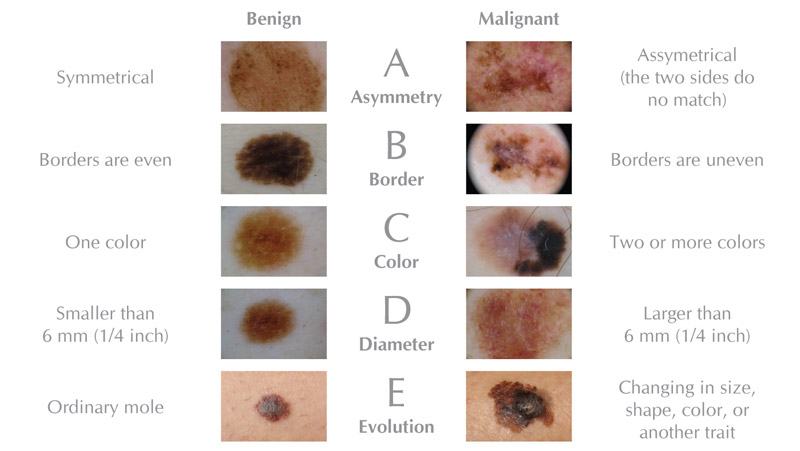
Dr. Bader is a Melanoma Expert
First and foremost, one needs a good and compassionate Dermatologist who can detect melanoma, detect metastasis, who can surgically remove tumors, and will be the patients point person and advocate in the event of metastatic disease. Dr. Bader has been treating melanoma since the mid 1990's. He will ensure that you receive the best possible care, he will coordinate your care between other physicians, and take the time to sit and discuss your concerns and answer all of your questions.
Need to Schedule an Appointment?
If you had a biopsy already, please bring your pathology report with you. If you have a history of melanoma, we will need a copy of the records
Malignant Melanoma – Information
Malignant melanoma is the third most common form of skin cancer and is increasing at nearly an epidemic rate. Melanoma is an aggressive form of skin cancer that often appears as an irregularly-shaped, irregularly pigmented, multi-colored, asymmetric pigmented flat or raised spot that may appear anywhere on the body. As this tumor does metastasize (spread to the lymph nodes and internal organs), early detection and thus early treatment is critical.
It is recommended that people, especially persons with moles, perform monthly self skin examinations.
What are the ?
The following are signs of melanoma:
A: Asymmetry = if one draws a line through the center of the mole, one side would not be the same as the other. Asymmetrical mole with irregular borders.
B: Irregular Border = the border of the mole is irregularly shaped
C: Variations in Color = more than one color or shade. Asymmetrical mole with irregular borders and variations in color.
D: Diameter larger than 4mm = Most persons have moles with one of the above signs (especially size), but two or more certainly warrants evaluation by a board-certified Dermatologist. Additionally, change in a mole would also warrant evaluation, although normal moles can change with time and is normal.
E: Evolution = the lesion is evolving or changing.

How to
Nearly all melanomas are treated surgically, by cutting the tumor out. This has the highest cure rate of any treatment.
This is done by simple excision, with or without frozen sections, or by using Mohs' Surgery.
Invasive Melanoma
Depending upon the thickness (how deep the tumor goes into the skin), staging procedures may be recommended and may include: chest x-ray, CT-scan, PET scan, sentinel lymph node biopsy, and blood tests.
For invasive melanomas, other non-invasive studies can be performed on the original skin biopsy sample that look at the genetics of the tumor and assesses the risk of the tumor spreading.
Metastatic Melanoma
Treatment of metastatic disease (that which has already spread to the lymph nodes or other organs) is difficult and is often managed by a team of doctors, including surgical and medical oncologists. When possible, metastatic tumors and lymph nodes are removed surgically. We now can look at the genetic make-up of the tumor, which falls into one of four subtypes:
- BRAF mutant.
- RAS mutant.
- NF1 mutant.
- Triple wild-type.
Newer targeted therapies, such as Vemurafenib, dabrafenib, trametinib, cobimetinib, and combinations of them, can be used based on the subtype of melanoma. Other treatments of metastatic melanoma may include chemotherapy, radiation therapy, or interferon.
